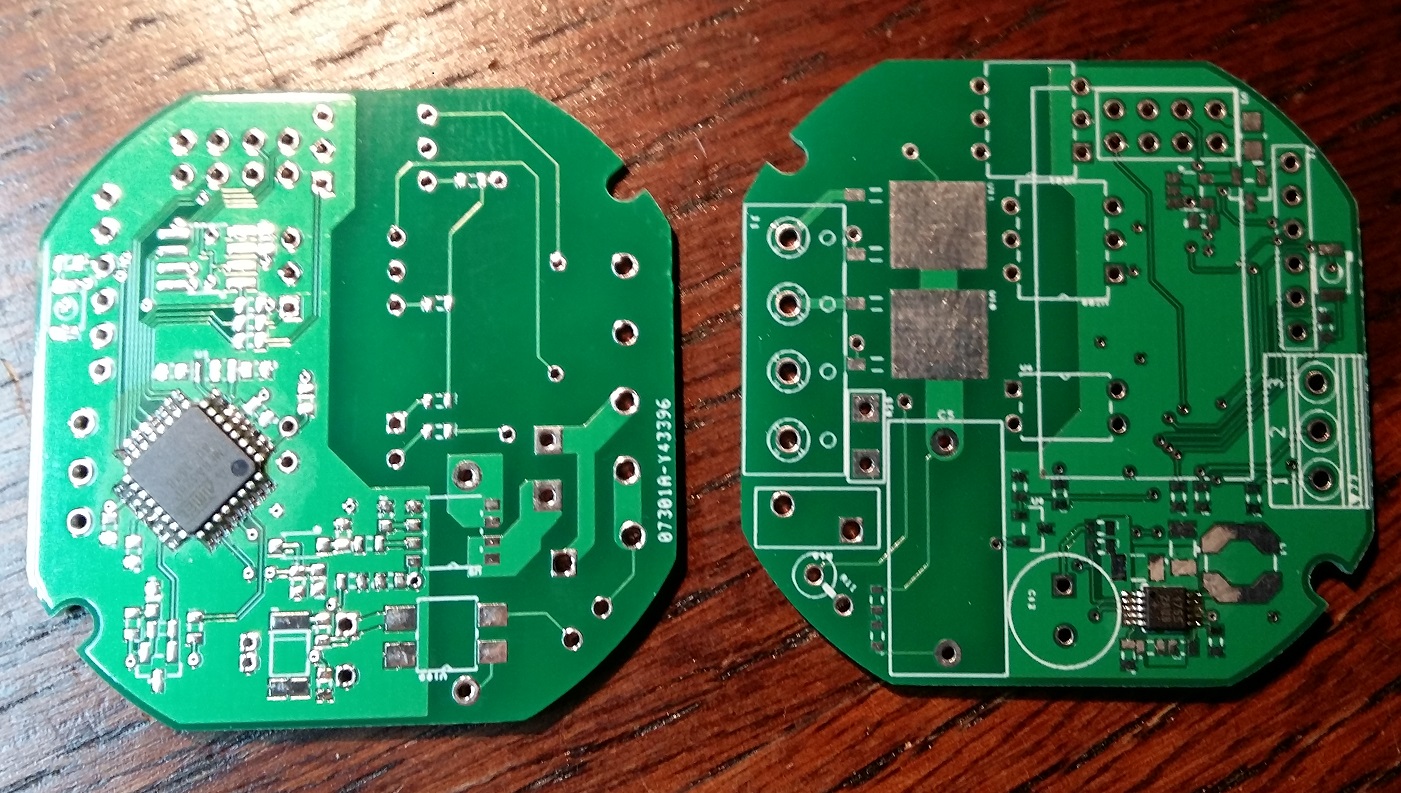2 channel in wall dimmer
-
Thank you all. I still want to know whether there will be charges also when I unplug it or not ?
I am giving the example of a wall plug because it can be plugged and unplungged several times and the terminals can be touched. -
Thank you all. I still want to know whether there will be charges also when I unplug it or not ?
I am giving the example of a wall plug because it can be plugged and unplungged several times and the terminals can be touched.@ahmedadelhosni That all has to do if you have some sort of bleeder. or something that uses the charge. So in my design on the secondary side (+5V) there is always something that consumes the current. On the primary side you can see that there is bleeder resistors in paralell with the capacitor. So it should be safe from that aspect
-
@ahmedadelhosni That all has to do if you have some sort of bleeder. or something that uses the charge. So in my design on the secondary side (+5V) there is always something that consumes the current. On the primary side you can see that there is bleeder resistors in paralell with the capacitor. So it should be safe from that aspect
@Denke yeah great. I understood now.
I am thinking of using LNK304 to produce 120mA max. Still trying to investigate how to layout the pcb design correctly from a safety prespective.
Thanks for support -
Boards are now ordered. Lets hope they will work fine. I have some doubts about EMI coming from the boards when dimming. So now it will be measure and correct if needed
-
Finally new boards have arrived..
Assembly will start soon:)
![0_1458579519569_20160321_172537 [297989] (2).jpg](/uploads/files/1458579517358-20160321_172537-297989-2.jpg)
-
@Denke Nice :) I am really excited to see your results.
Regarding the resistor which is in parallel to act as a bleeder. What value do you think the most suitable ? 100K ? 1M ? and howa much watt ?Thanks.
-
@Denke Nice :) I am really excited to see your results.
Regarding the resistor which is in parallel to act as a bleeder. What value do you think the most suitable ? 100K ? 1M ? and howa much watt ?Thanks.
@ahmedadelhosni
Hi I have used 1M as bleeder in 0603 size. This resistor should be able to handle around 0.1W.If i have calculated right the power in the bleeder resistor should be around 0.05W
-
Any pictures of the assembled board ?
-
Any pictures of the assembled board ?
@ahmedadelhosni Have not started the assembly of these boards yet. Im currently doing assembly of my other project Wirsbo/Uponor thermostat replacement. And those boards seems to be fully functional.
I will post a picture as soon as I get it assembled
-
@ahmedadelhosni Have not started the assembly of these boards yet. Im currently doing assembly of my other project Wirsbo/Uponor thermostat replacement. And those boards seems to be fully functional.
I will post a picture as soon as I get it assembled
Thanks @Denke
-
If I am not mistaken, isn't this the bleeding resistor in parallel with the cap ?
Why is there a reverse diode ? Won't this block the current from passing from the + terminal of the capacitor to the resistor then to gnd ? -
If I am not mistaken, isn't this the bleeding resistor in parallel with the cap ?
Why is there a reverse diode ? Won't this block the current from passing from the + terminal of the capacitor to the resistor then to gnd ?@ahmedadelhosni
It's a zener diode which will pass current once voltage is above 24v and then the resistor protects it from complete shorting to ground. -
First components added after a visit to the lab at work and some soldering under the microscope

-
Hi just wanted to get an update on this project.
I have assembled 2 pcb (not all components) to start debug the processor platform and surroundings. Unfortunatly i got a bit stuck as i have problems loading the boot loader. I have tried to use the process suggested on arduino.cc using an nano as ISP. I get alot of strange behaviours and are not able to upload.Any tips and tricks is well received if you have any.
Othervise i will rest this project for a couple of weeks to be able to finnish my other thermostat project as well start a new, as the pool season is around the corner. And i really would love to be able to corntol pupm, lghts read temperatures and other stuff.
But if i find some good tricks i will pursue the goal to finnish this in wall dimmer before summer.
-
@Oitzu - why should not burning a bootloader to the atmega work without the nrf24 attached?
-
@sundberg84 in most of my cases it failed due to spi interferences.
-
@Oitzu Ahh, sorry I missunderstood you - the other way around. I read it like you had to have the nrf attached to make it work :)
